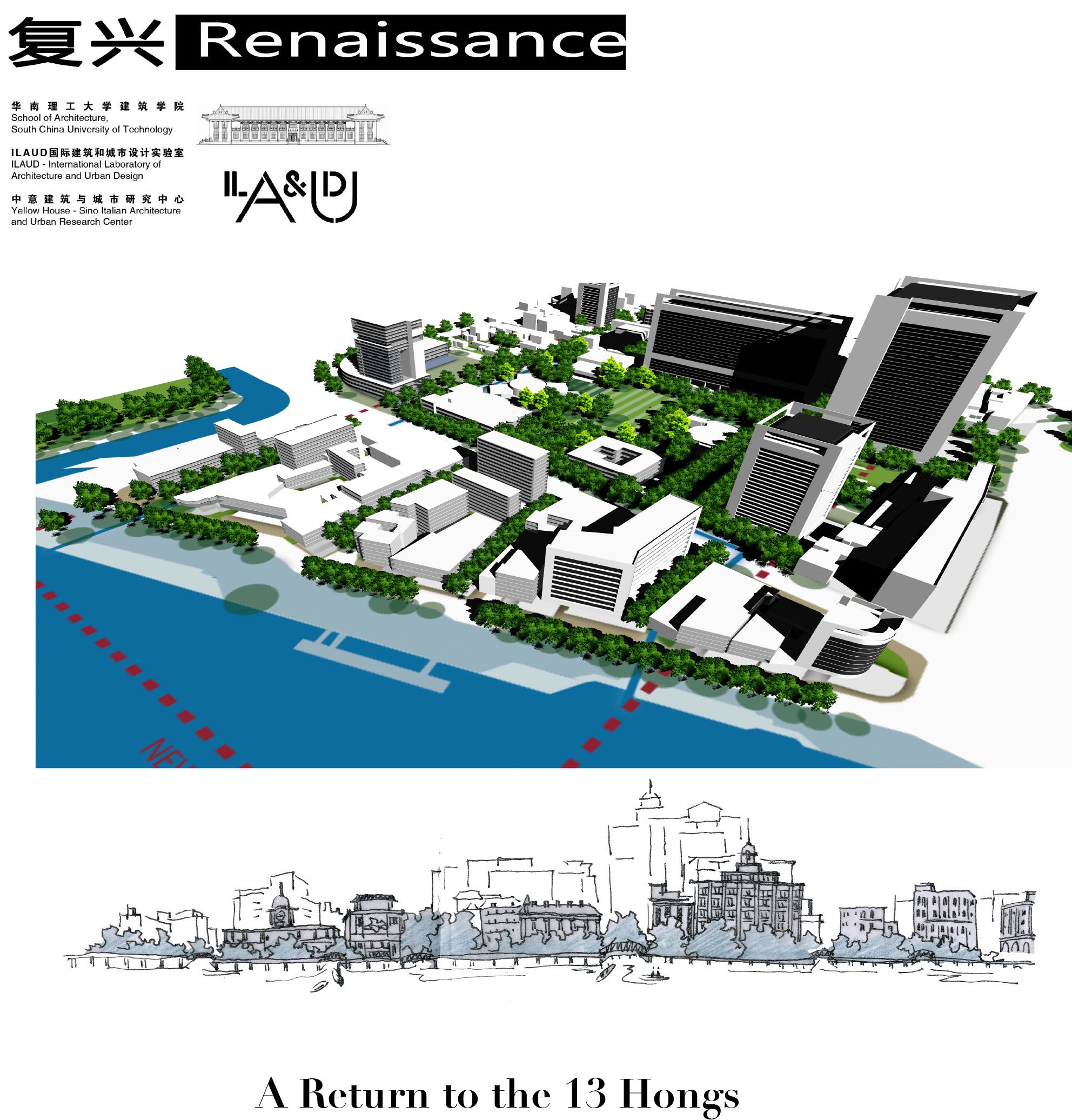The Laboratory explored two themes:
- the upgrading and the reorganization of the old neighbourhood around the 13 Hongs It is a very animated mix of commercial activities and housing and solutions to keep it an attrac- tive place to live in with adequate mo- dern standards could become a model for reorganizing and redesigning other parts of the city.
- the rediscovery and the enhancement of the memory of the 13 Hongs, with its role in the formation and growth of Guangzhou. The problem of hidden urban memories that still exert an influence on the present organization and life of a city and is worth to make evident was first explored in the ILAUD 2006 Laboratory held in Buenos Aires with reference to natural The Guangzhou laboratory was a further step in this direction. It offered the opportunity to explore four issues that are relevant in the current international debate about urban design and planning.
The first one concerns the role that memory can play in the design of future urban environments. Memory is a basic element of conservation theories and methodologies but it is also an important ingredient to envision the future. It is extremely interesting to explore this aspect in countries that have a very rich and solid past.
The second new cities in the emerging regions of the world and old cities that hope to trigger a renaissance process by introducing in their structures the imagery of the future. In general as a consequence of the very nature of this imitative process the invention is limited to the replica of fashionable architectural languages and types. To be recognized as an important modern metropolis a city must have a certain kind of skyscrapers, museums, opera houses, convention halls, avenues and waterfronts, and they must possibly be “green buildings”. Can cities escape this stereotypical fate, and in which way?
The third deals with the role of nature in urban environments. It is an issue that after years of indifference and oblivion has emerged again as central because of the environmental crisis. In some cases it concerns the rediscovery of the geomorphology of a place, in others it is related to the existence of water, in others it focuses on the plants and the animals of the region and the city. As it frequently happens this new concern has often been prompted more by the search of a new attractive image and the effort to reconstruct.
